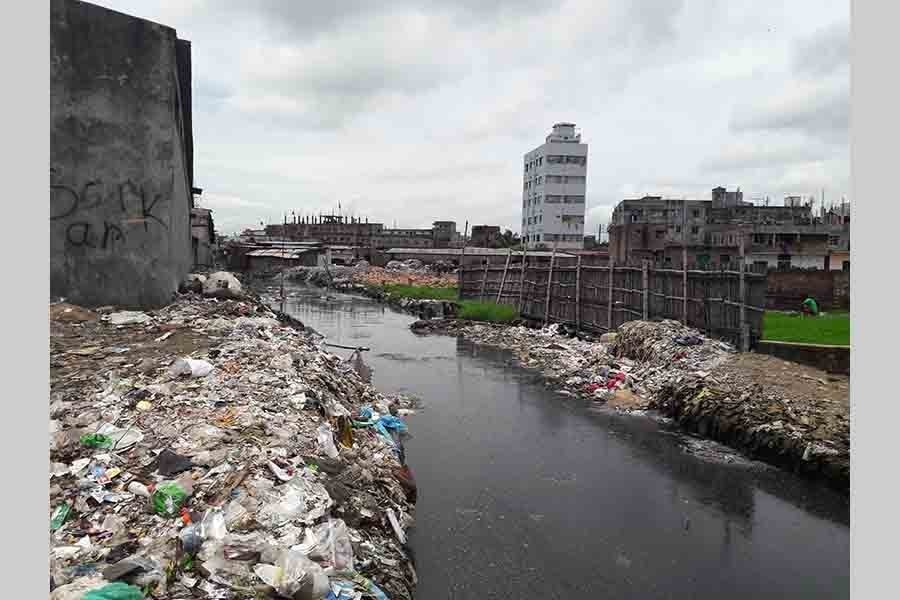That the faltering start of the 200-acre Savar Tannery Industrial Estate portended bad had been conspicuous from the beginning. In the first place, it took an inordinately longer time for the large complex to declare itself fully ready to become operational. It couldn't begin activities in full. Drawbacks continued to crop up one after another. On the other hand, the tanneries located in Hazaribagh in a central part of Dhaka, were found reluctant to move to the sprawling Savar Tannery Estate. In fact, they were not fully convinced that upon shifting to a remote area, a half-done tannery estate to be precise, they would be able to enjoy the industrial benefits promised by the government.
All this called for a carrot-and-stick policy, including threats of punishment for disobeying government orders, to finally persuade almost all the tanners to relocate to Savar. A few, however, stayed back and, allegedly had their licenses cancelled. Notwithstanding their final relocation, the Savar Tannery Estate remained a non-starter. The sloppy state of the largest tannery complex in the country exists even today. In the absence of the Central Effluent Treatment Plant (CETP) for a couple of years after the start of the tannery estate, a device has at last been put in place. To the consternation of the estate's management authorities --- Bangladesh Small and Cottage Industries Corporation (BSCIC) in particular, the CETP has failed to work properly. According to the Department of Environment sources, the present central effluent treatment plant at the Savar estate has the capacity to treat around 25,000 cubic metres of liquid waste daily. But the tanners inside the estate generate 40,000 cubic metres of waste. The message is highly depressing: it says 15,000 cubic metres of untreated waste are now being released into the nearby Dhaleshwari river. Another deficiency adds to the overall dysfunctional condition of the estate. The exclusive tannery zone doesn't have the arrangement for treating solid waste, like heavy metals and chromium, which are also dumped into the river. All this contributes to the turning of the Hemayetpur stretch of the river into a point of freestyle pollution.
The most alarming aspect of this kind of pollution is the river water from points like Savar flows downstream, and pollutes newer areas. The situation turns worse during yearly local flooding in monsoon. The farmers cultivating land on the river banks, professional fishermen and scores of others dependent on Dhaleshwari water are, thus, made to brace for a terrible turn of the situation.
In the past three years, a considerably large quantity of solid waste is alleged to have been dumped into the Dhaleshwari. Against this dismal backdrop, a decision to shut down the high-polluting tanneries may have been taken finally. Earlier, in 2021, the environment ministry agreed to a recommendation made by experts to shut down the Savar Tannery Estate, in operation haphazardly for nearly a decade. The chief reason advanced was the estate had been operating without environmental clearance since beginning.
A parliamentary standing committee has recently said the estate will be allowed to operate again only after getting the environmental clearance. The clearance is subject to meeting all other essential requirements. According to media reports, the Department of Environment (DoE) had served a show-cause on the BSCIC. It asked BSCIC to reply as to why the estate shouldn't be declared shut as per the JS committee's recommendation. Upon receiving a reply, the JS committee said it was not satisfied with it.
It might lead to extreme steps. The reason behind the possible closure of 23 tanneries in the Savar Estate is their being identified as high-level polluters. They are set to face closure as has been directed by the parliamentary standing committee on environment, forest and climate change ministry at a recent meeting at the Jatiya Sangsad Bhaban. The environment pollution in the estate area has deteriorated to such a level that the utility services of seven tanneries have been suspended, the JS standing committee said. All of these tanneries are in operation under the Savar Tannery Estate. A total of 120 tanneries operate under it.
The lackadaisical performance of the tannery complex and the consequent punitive actions make the industry insiders feel confounded. To them, these developments presage worse times for the presently dishevelled tanneries. With the local and global corona pandemic fallout petering out fast, the hides and skin treatment and related activities are expected to gain speed. Without fully operational tanneries, the finished leather sector could also find itself in dire straits. The Savar Tannery Estate is the largest of such formal complexes in the country. Moreover, it works under a ministry and is supervised by a state-run organisation. A section of people close to the tannery industry had expressed their doubt about the expected results from the sloppy shifting of the Hazaribagh tanneries to the Savar Tannery Estate. But they had also kept in mind the ills produced by the dilapidated and nearly dysfunctional tanneries in Hazaribagh. The pollution-plagued neighbourhoods welcomed the shifting. It was because they had already suffered through different types of pollutions for 50 long years.
During their decades-long operation in central Dhaka's Hazaribagh, the tanners demonstrated that they were compulsive polluters. During their long stay in the area, they had wrought havoc on the vast area's environment. It was caused by the unremitting release and dumping of tannery effluents and solid waste into the Buriganga and its branches. The shifting of the tanneries to an area far from a highly populated urban pocket had been overdue. But it didn't mean the relocation of wholesale pollution to an idyllic rural stretch.


